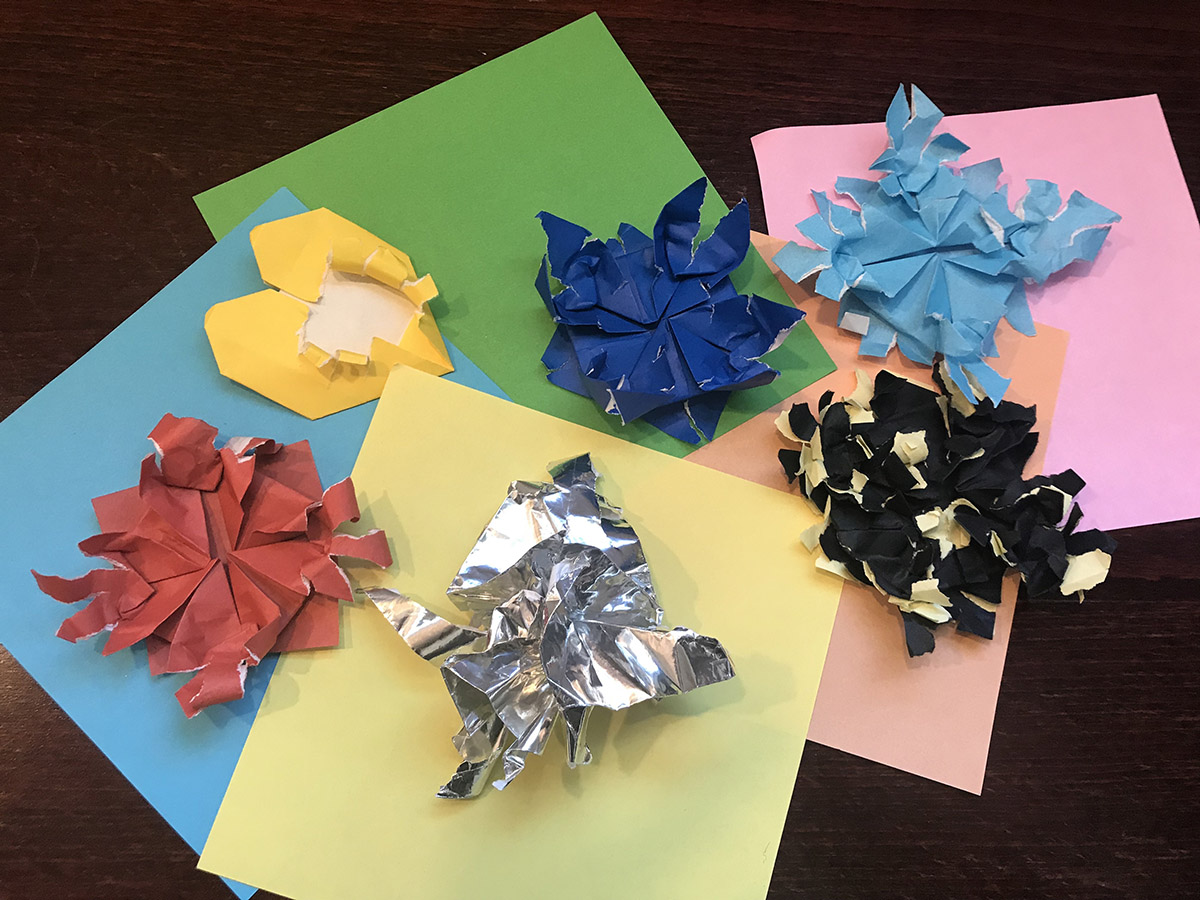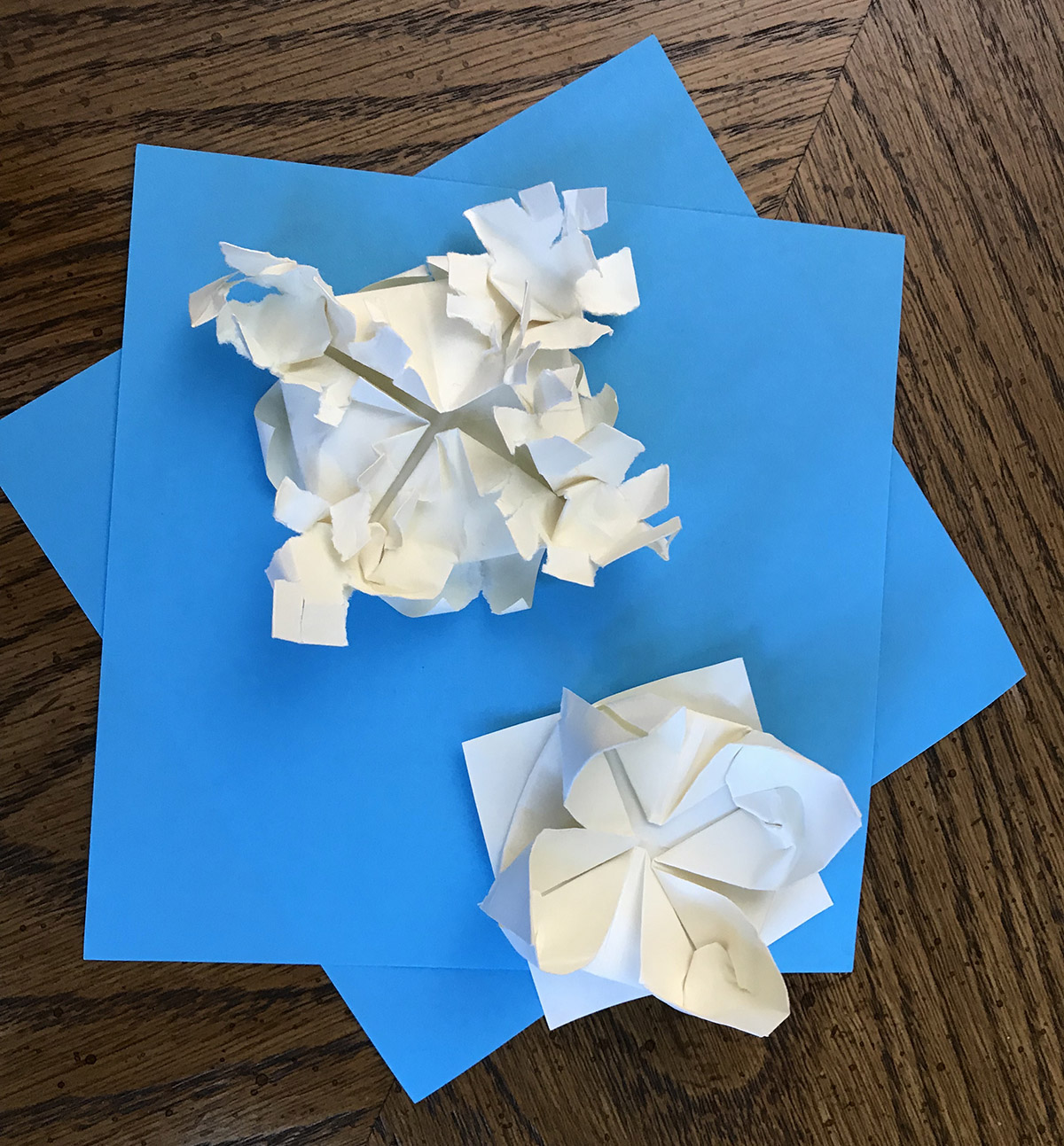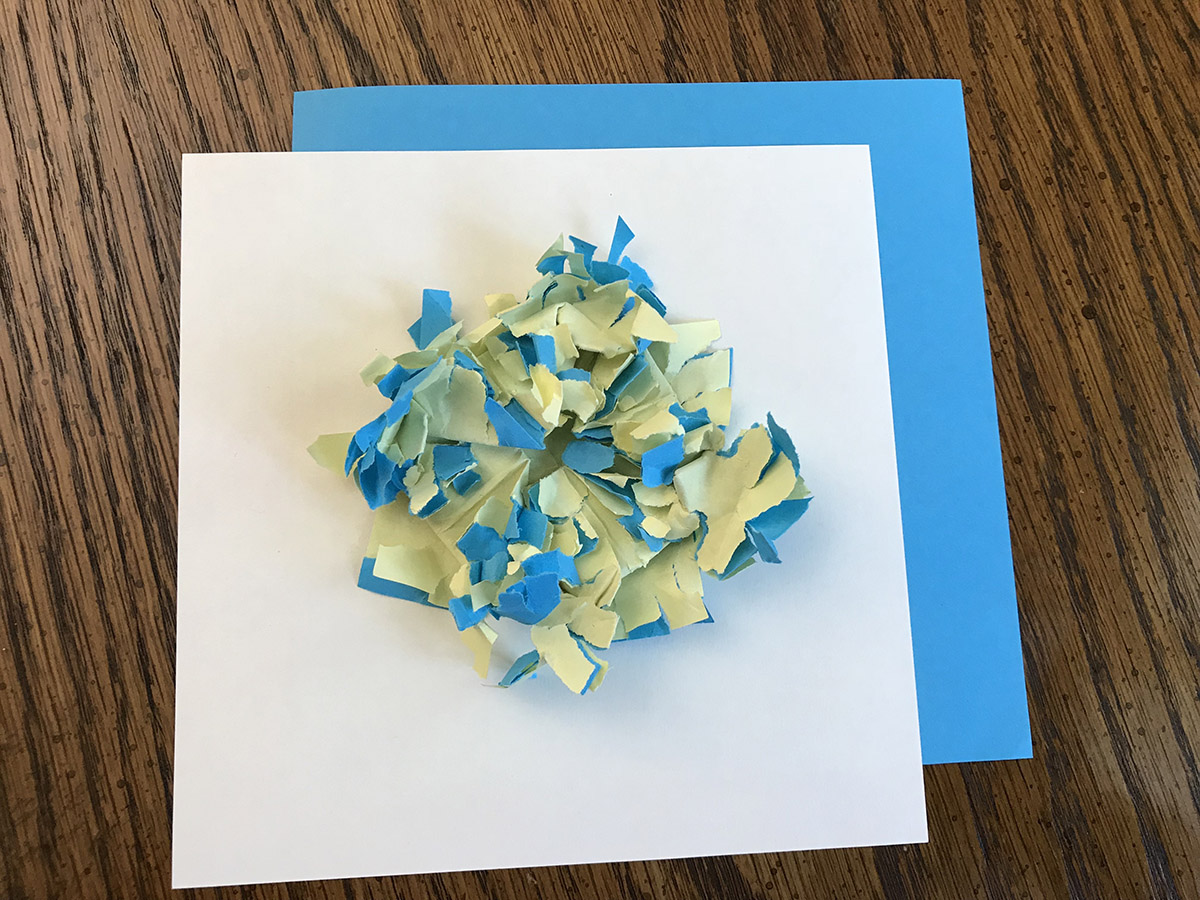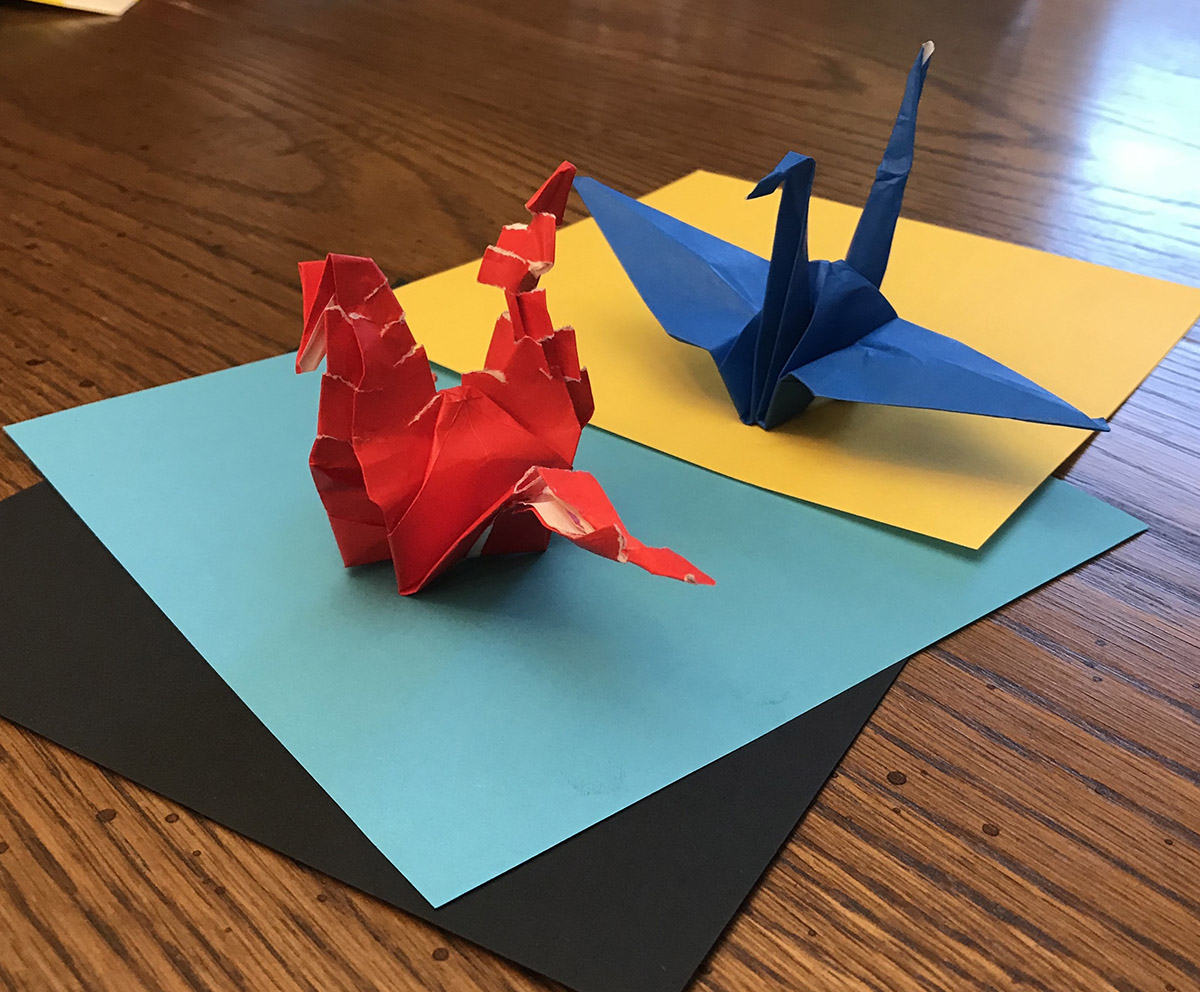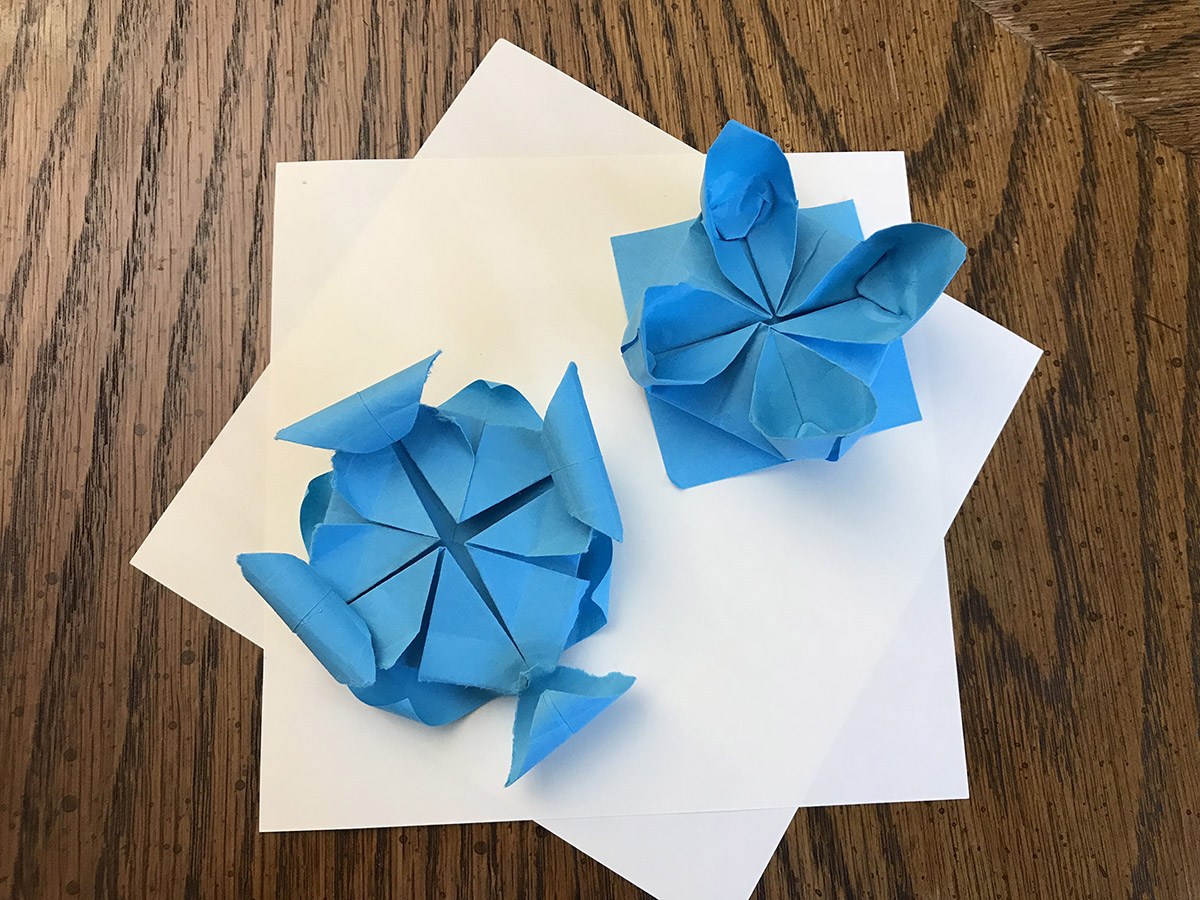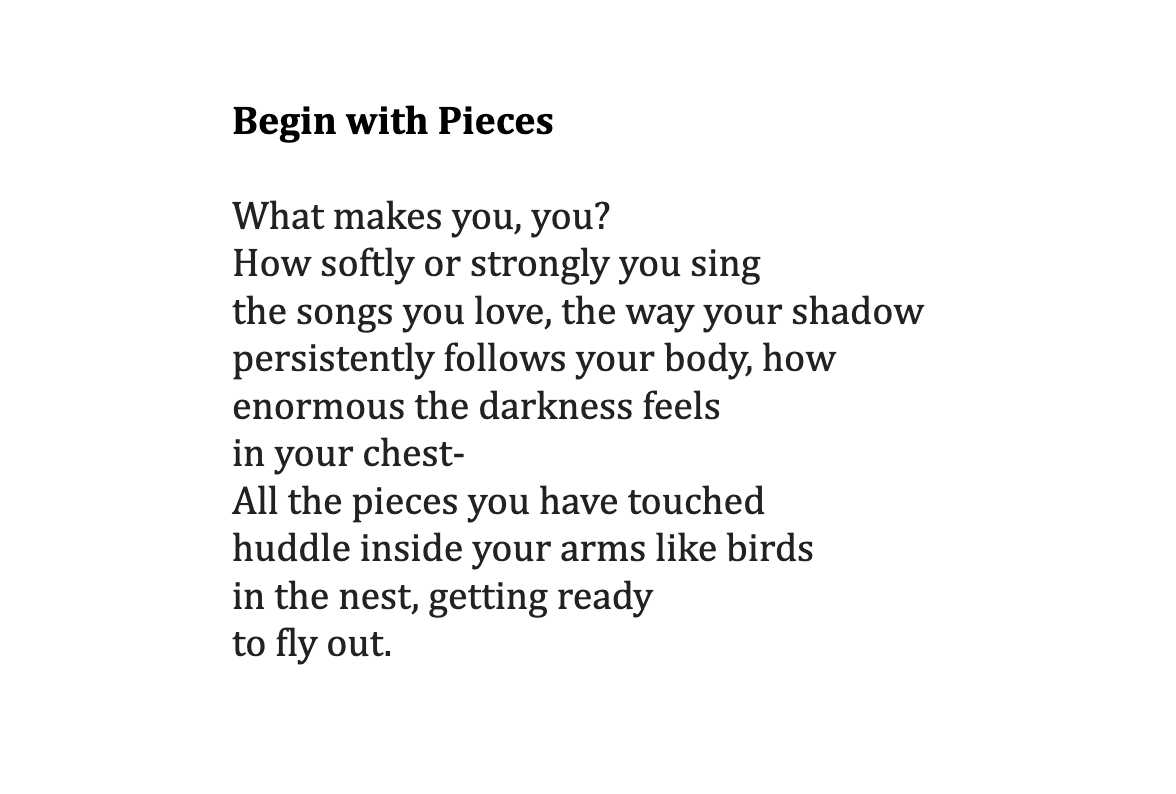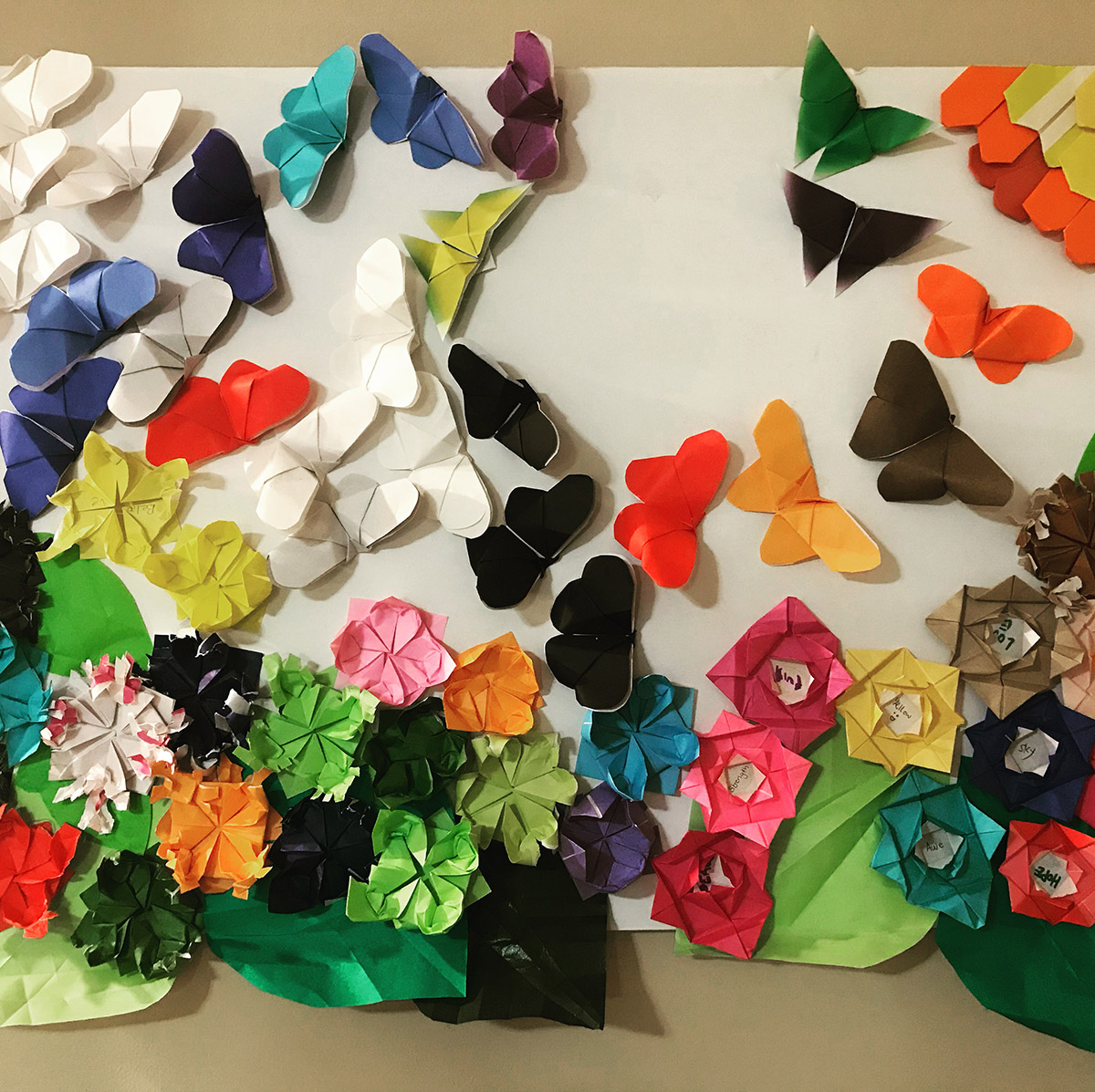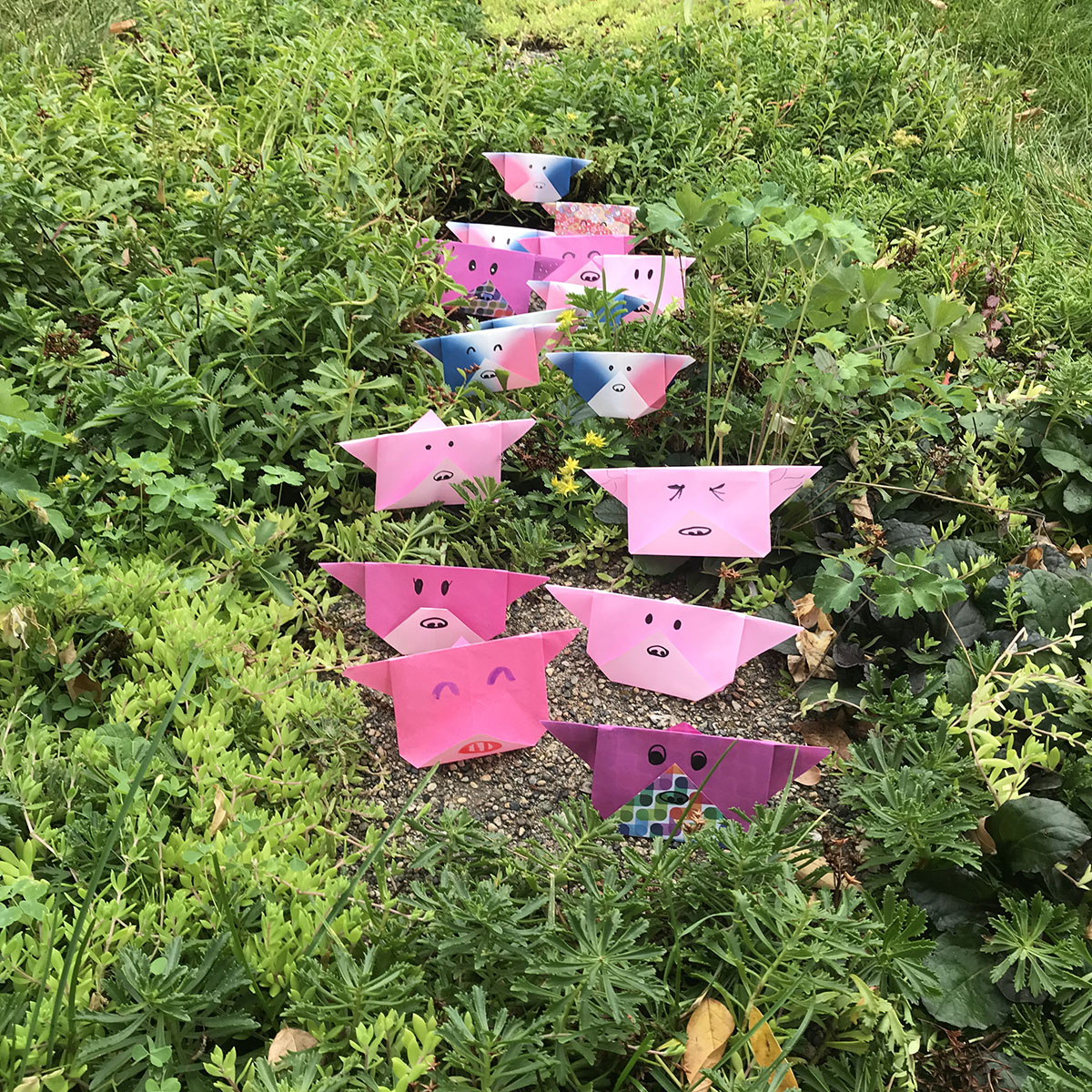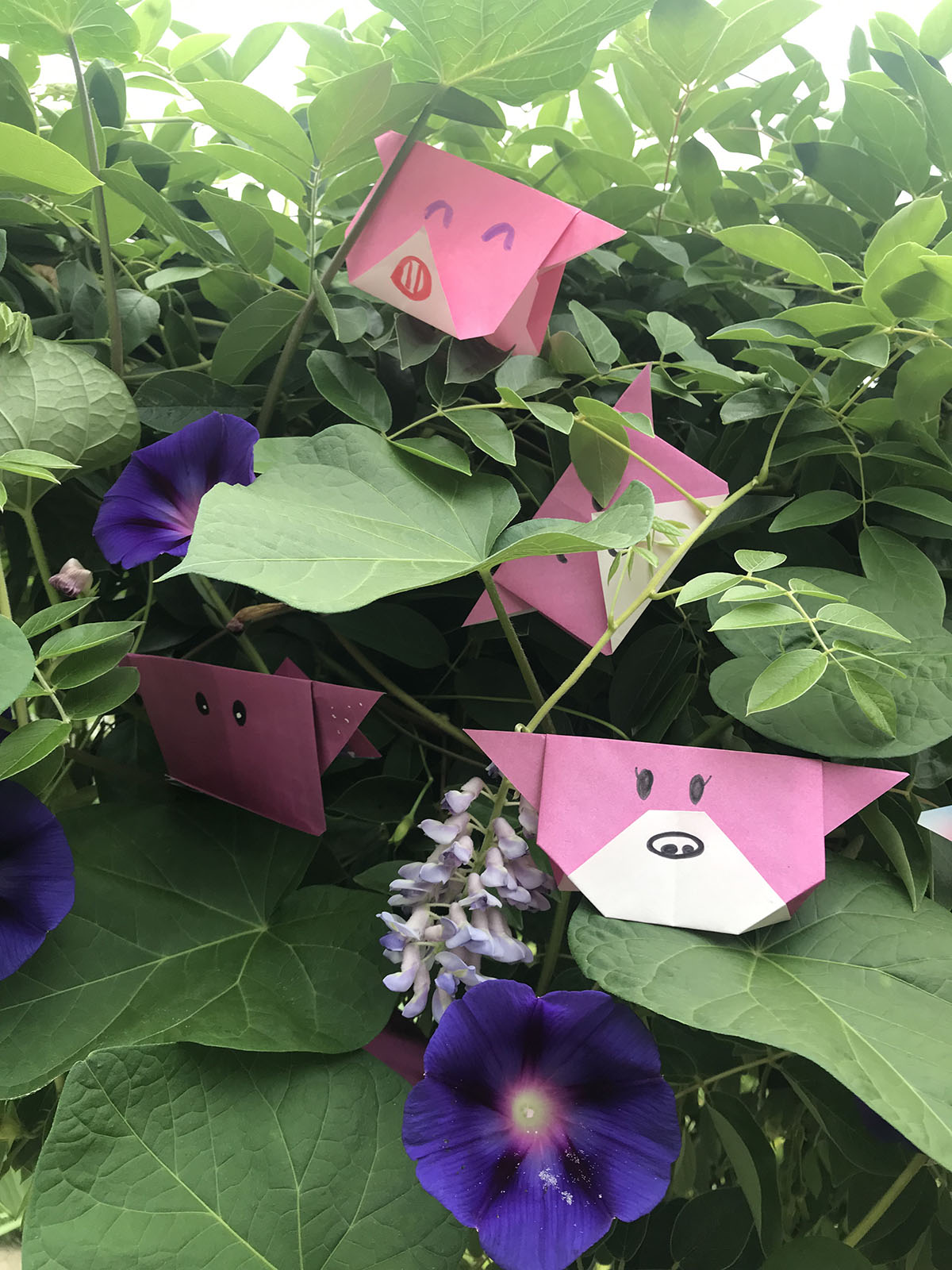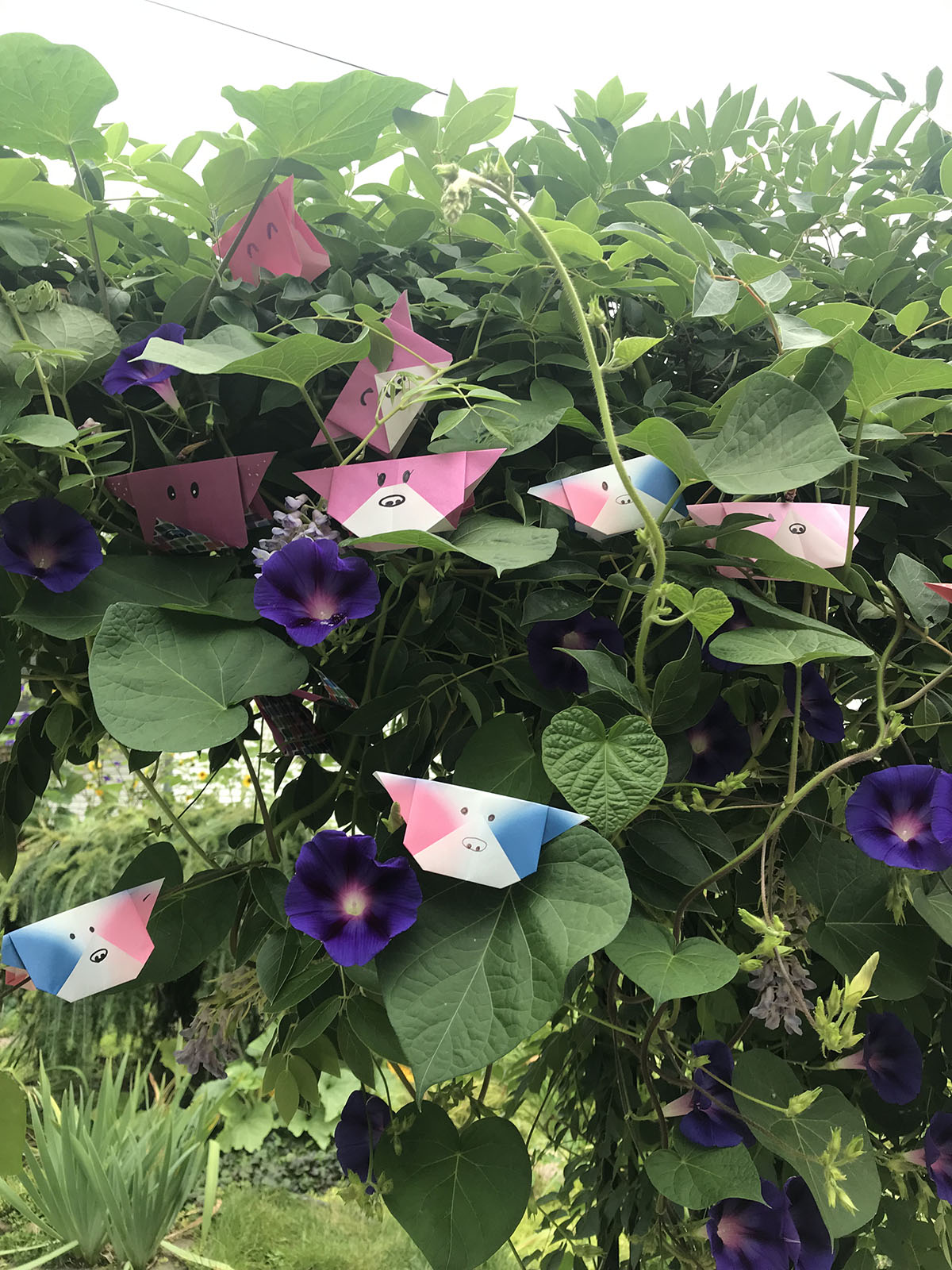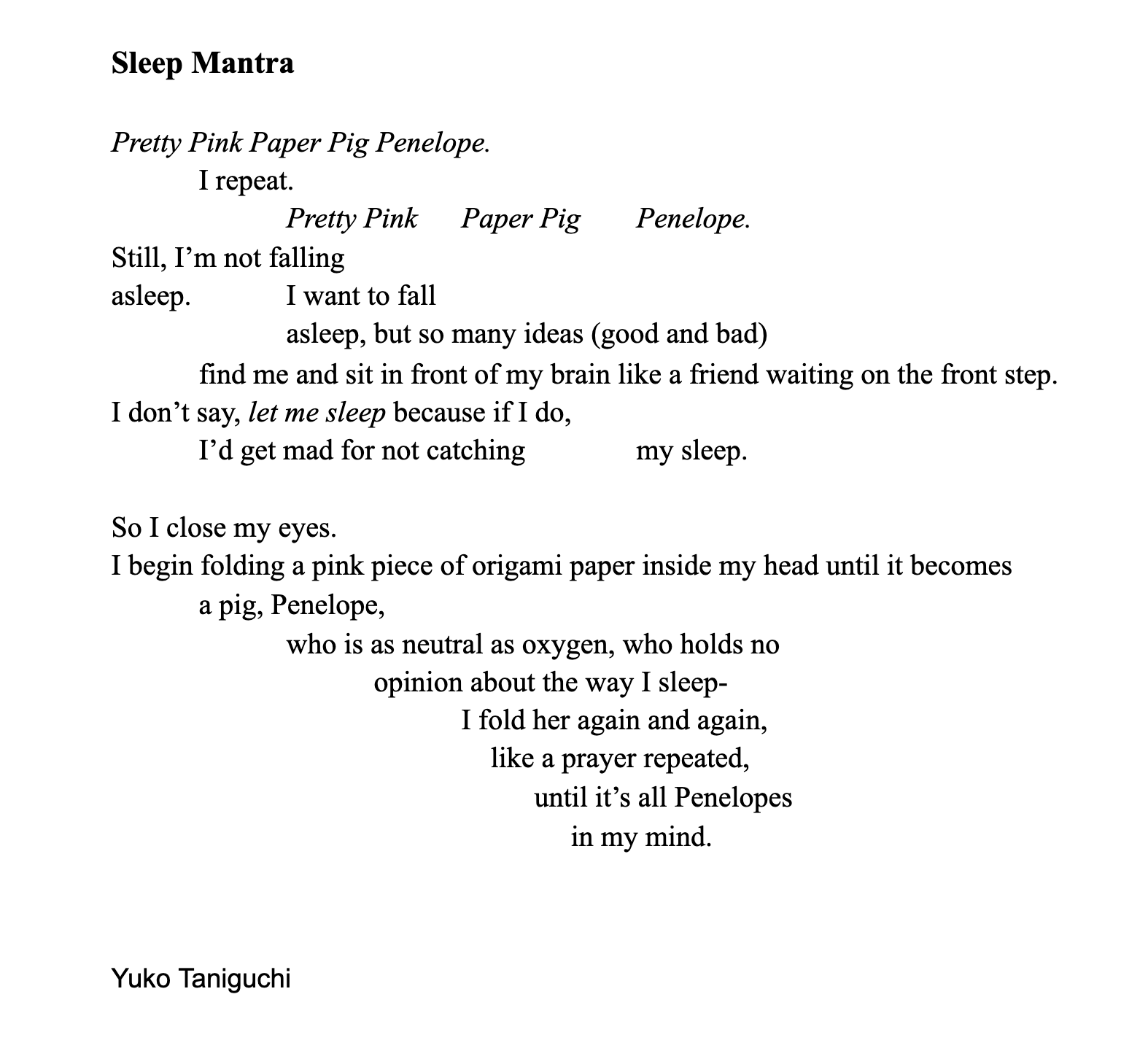Origami
Project 1: Wabi Sabi Flowers, Wabi Sabi Flower & Water Lily, Wabisabi Garden
Explanation: Poets are lumberjacks on paper. They listen to the sentences keenly and attentively to catch the spot where a sentence gets chopped in two. Each piece is cut into more pieces so that the poet can roll them over, change the order, mix and match by color and sound until the arrangement has a shape that connects to the poet’s heart. Poets’ work–searching for an incomplete piece to create a poem–reflects the Japanese aesthetic concept, Wabi-Sabi: beauty exists in things imperfect, impermanent, and incomplete. Wabi,(侘 simplicity, quietude) and Sabi (寂, partina of age and loneliness) were separate pieces, but over time, they were combined to mean finding beauty in unconventional spaces, such as the broken, damaged, and the aged.
In making origami, sometimes, things don’t turn out. The paper gets ripped, twisted, distorted in the process making, and we get frustrated. Origami water lilies, a beautiful three dimensional and relatively simple pattern, actually have a final step that often gets ripped. After folding four corners into the center to make a square shape and repeating this three times, the final step is to pull the tips of the paper up to create four pedals. We need to pull in alignment with the side of the square base, but someone new to origami often pulls them up so vertically that the corners get ripped. Looking at the ripped corners, many say, “I messed it up.” Then “I’m not good at this.” Rarely do I hear, “I want to try making it again.”
In this disheartened space, I became curious how ripped edges could actually add some texture. If the corners get ripped, add more rips. Keep tearing them to see what it becomes. Through this, I discovered an interesting flower that no longer looks like a water lily. For now, I’m calling them Wabi Sabi flowers. Wabi Sabi flowers look powerful to me. If you were to make it a double sheet, you have more to rip, adding more depth, texture, and colors. It is one of a kind.
